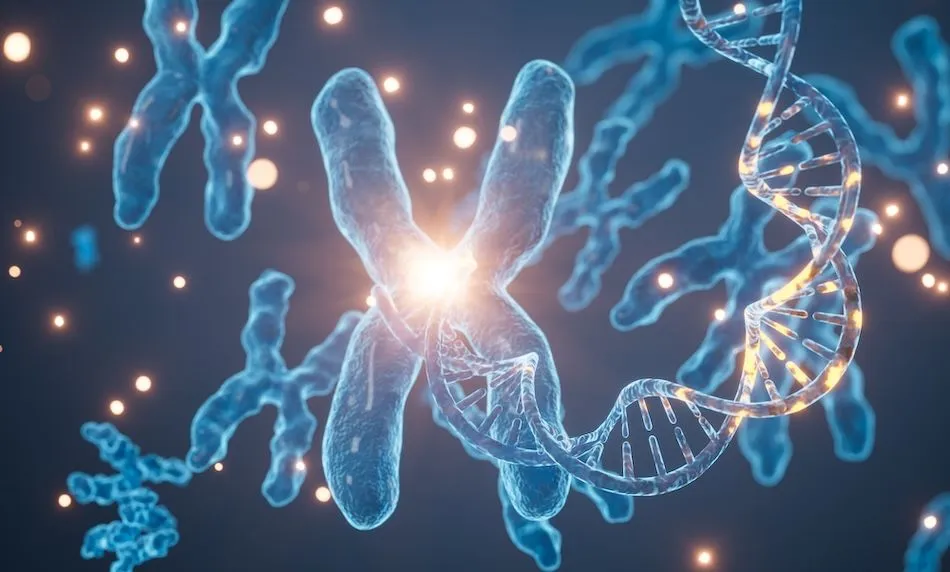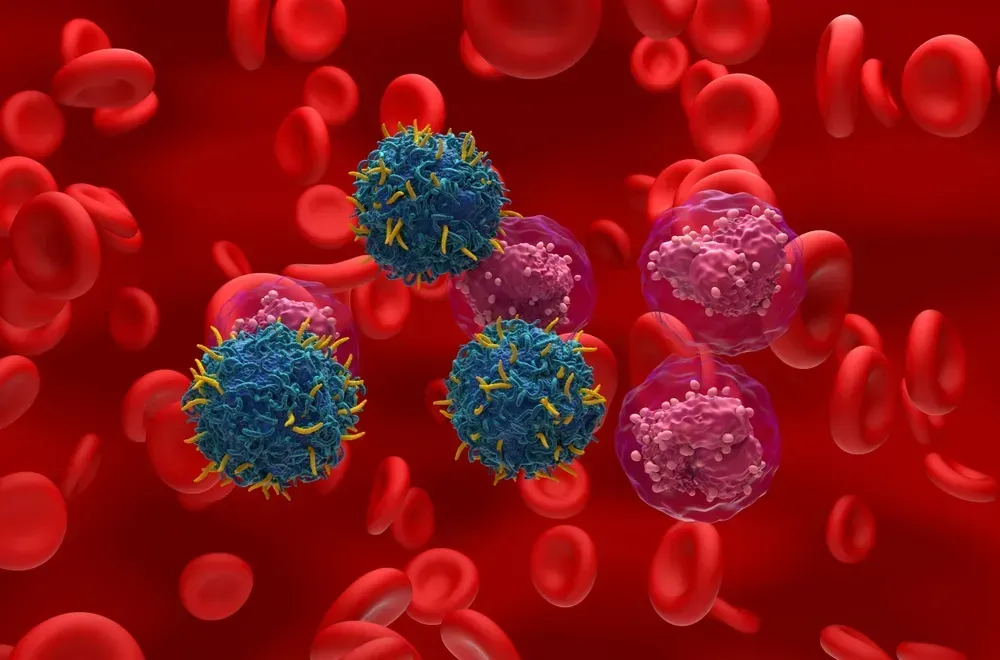ASH 2023: How Tocilizumab Prevents CRS with Teclistamab Administration

Cytokine-release syndrome (CRS) is a serious side effect of immunotherapies used to treat multiple myeloma. Symptoms of CRS can be serious, ranging from something like a simple fever to something as complicated as comatose due to extremely low blood pressure.
A promising study was presented at the 2023 ASH Conference regarding the use of a multi-use drug called tocilizumab to prevent cytokine-release syndrome (CRS) in patients receiving the bispecific antibody, teclistamab.
Understanding the Study
From December 2022 to July 2023, 48 patients at Emory University Hospital were observed when receiving their step-up doses for teclistamab and given tocilizumab as a prophylactic medicine in order to prevent CRS. All of the patients were refractory to the drug classes immunomodulatory drugs, proteasome inhibitors, and CD38-targeting monoclonal antibodies.
Typical premeds were given to each myeloma patient per institutional guidelines thirty minutes prior to each step-up dose:
- Benadryl 50 PO
- Tylenol 650 PO
- Dexamethasone 16mg PO
After evaluating the first 15 patients, the researchers of this study discovered the median time to CRS (cytokine-release syndrome) from the teclistamab administration of the first-priming dose was 48 hours.
They subsequently administered tocilizumab 8mg/kg IV over an hour (max dose of 800 mg) prophylactically at 44 hours (4 hours prior to the second step-up dose level) for the next 33 patients.
Study Results
The rate of all grade CRS amongst the entire cohort was 21 of 48 patients (43.8%).
CRS occurred in 10 of the 33 patients (30.3%) who received prophylactic tocilizumab compared to 11 of 15 (73.3%) of patients who did not.
Interstingly, concurrent immune effector cell neurotoxicity syndrome (ICANS), another common side effect of immunotherapies like CAR-T and bispecific antibody therapy, was also decreased when the patients were treated with prophylactic tocilizumab (20% vs 6.1%, respectively).
Study Complications
In terms of patient complications during the trial, the majority of CRS events with prophylactic tocilizumab were grade 1. There was one patient that had grade 2 CRS and another had grade 3.
All ICANS in the prophylactic cohort were grade 1 and managed symptomatically. The median duration of ICANS was 1 day.
The non-prophylactic cohort in this trial experienced 3 of 15 (20%) patients with readmissions to the hospital after they were discharged due to complications, with 1 additional patient going to hospice.
None of the patients in the prophylactic cohort were readmitted to the hospital within 14 days of discharge.
Interview with Researchers on this Toci Study
Was there anything that anything that surprised you about this data?
They were worried about changing the infection risk among the clinical trial patients. If patients are going to receive toci as reactionary treatment versus preventative treatment, the risks are the risks, but the researchers didn't want to cause unnecessary problems by giving them prophylactic tocilizumab. Thankfully, they didn't see any difference in infection risk among this cohort who received prophylactic toci compared to those that did not receive the medication.
Why apply the prophylactic toci before the second step-up dose instead of doing it before the first step-up dose?
This is a common question among people who are learning about the study and something that the research team is considering adjusting. Toci has a half-life of about 10-11 days, so there is no reason not to apply the medication before the first dose. Now that the study's teclistamab-receiving myeloma patients to outpatient, there have been 2 incidences of CRS reported among those patients, (9%), but the question remains: could they have prevented the CRS by applying toci before the first step-up dose? The answer is unknown but interesting to investigate.
Have you heard about the wearable technology devices that can detect CRS early within patients, and do you think you can combine your study of prophylactic toci to help with early intervention if you had these devices?
They currently don't have the resources to afford these devices at the moment, if there was some kind of extra funding or grants made available for the study it might be possible. They currently have a nurse who does proactive check-ins with the patients on the days that they are not seen in the hospital. She makes sure that they are tracking their temperatures (each patient has a temperature log) and assures that they do not have any questions. In the future, if all bispecific treatment were moved outpatient, it would be more likely that something like this technology would be necessary and funded in order to track patient symptoms on a wider scale.
Do you believe that this study (as we collect more data and find other similar findings in clinical trials) would help move the indication of bispecific therapy administration to be completely outpatient? What barriers might arise by moving the administration outpatient?
This could help with myeloma bispecific administration in particular. There have been centers who have reached out to Emory/Winship for their protocols that want to copy this own study/practice within their own facilities, which is encouraging.
A 24-urgent care available to oncology patients is needed in order to replicate this practice so that patients can get timely care for their CRS symptoms if they do arise. Untreated or delayed treatment of CRS can lead to serious complications, so patients cannot afford to sit in the emergency room for several hours if they are already presenting with onset cytokine release syndrome. It's important to make sure that you have all the proper care in place for patients before working on getting them outpatient.
Reimbursement is also a huge conversation regarding moving patients outpatient for bispecific antibody therapy, but the cost of hospitalization far exceeds the cost of needing tocilizumab. A majority of the reimbursements have been successful when it comes to insurance reimbursements for toci. Therefore, if toci is preventing hospitalizations, it's worth it.
How accessible is tocilizumab to community clinicians if bispecific antibody therapy were to move to the outpatient setting?
All community clinicians should have access to tocilizumab, but CRS is extremely daunting to community clinicians and they are very hesitant to bring these medications into the community center. It would require a lot of training and adjusting for this, at least on the community side, for this to be possible. For the near future, step-up dosing in the out-patient hospital setting, and then having the patient move to the community clinic makes the most sense. After the step-up dosing, the risk of CRS is slim to none.
Conclusion and Takeaways
In conclusion, the prophylactic (preventative) use of tocilizumab prior to the second priming dose decreased the incidence and severity of cytokine release syndrome in heavily refractory relapsed/refractory myeloma patients receiving teclistamab.
These results are lower in absolute incidence and severity when compared to the original FDA-approving MajesTEC-1 clinical trial, where CRS with teclistamab was seen in 72% of patients.
Other benefits of using prophylactic tocilizumab included: prevented usage of steroids, prevented dose delays, prevented readmission to the hospital, and possibly reduced the occurrence of ICANS.
These data make a case for early incorporation of prophylactic tocilizumab and support outpatient administration of teclistamab in most patients.
If you are receiving teclistamab (or any CRS-inducing therapy such as CAR-T or another bispecific therapy), talk to your treating team to make sure you are aware of what prophylactic drugs are being given to prevent CRS and talk to them about your personal risks for CRS.
You can ask specifically if tocilizumab will be used for prophylaxis in your personal case.
Acknowledgments
Thanks to Ellen Marin, PA-C, and her research team at Winship Cancer Institute at Emory University Hospital (and other institutions cited in the abstract), as well as the many patients and caregivers that participated in this study to make it possible.
ASH 2023 Resources
Would you like to watch ASH 2023 myeloma research interviews from the investigators themselves? Click "ASH 2023" here: HealthTree University Conference Coverage
To read other ASH 2023 articles, click here: HealthTree 2023 ASH Articles
Cytokine-release syndrome (CRS) is a serious side effect of immunotherapies used to treat multiple myeloma. Symptoms of CRS can be serious, ranging from something like a simple fever to something as complicated as comatose due to extremely low blood pressure.
A promising study was presented at the 2023 ASH Conference regarding the use of a multi-use drug called tocilizumab to prevent cytokine-release syndrome (CRS) in patients receiving the bispecific antibody, teclistamab.
Understanding the Study
From December 2022 to July 2023, 48 patients at Emory University Hospital were observed when receiving their step-up doses for teclistamab and given tocilizumab as a prophylactic medicine in order to prevent CRS. All of the patients were refractory to the drug classes immunomodulatory drugs, proteasome inhibitors, and CD38-targeting monoclonal antibodies.
Typical premeds were given to each myeloma patient per institutional guidelines thirty minutes prior to each step-up dose:
- Benadryl 50 PO
- Tylenol 650 PO
- Dexamethasone 16mg PO
After evaluating the first 15 patients, the researchers of this study discovered the median time to CRS (cytokine-release syndrome) from the teclistamab administration of the first-priming dose was 48 hours.
They subsequently administered tocilizumab 8mg/kg IV over an hour (max dose of 800 mg) prophylactically at 44 hours (4 hours prior to the second step-up dose level) for the next 33 patients.
Study Results
The rate of all grade CRS amongst the entire cohort was 21 of 48 patients (43.8%).
CRS occurred in 10 of the 33 patients (30.3%) who received prophylactic tocilizumab compared to 11 of 15 (73.3%) of patients who did not.
Interstingly, concurrent immune effector cell neurotoxicity syndrome (ICANS), another common side effect of immunotherapies like CAR-T and bispecific antibody therapy, was also decreased when the patients were treated with prophylactic tocilizumab (20% vs 6.1%, respectively).
Study Complications
In terms of patient complications during the trial, the majority of CRS events with prophylactic tocilizumab were grade 1. There was one patient that had grade 2 CRS and another had grade 3.
All ICANS in the prophylactic cohort were grade 1 and managed symptomatically. The median duration of ICANS was 1 day.
The non-prophylactic cohort in this trial experienced 3 of 15 (20%) patients with readmissions to the hospital after they were discharged due to complications, with 1 additional patient going to hospice.
None of the patients in the prophylactic cohort were readmitted to the hospital within 14 days of discharge.
Interview with Researchers on this Toci Study
Was there anything that anything that surprised you about this data?
They were worried about changing the infection risk among the clinical trial patients. If patients are going to receive toci as reactionary treatment versus preventative treatment, the risks are the risks, but the researchers didn't want to cause unnecessary problems by giving them prophylactic tocilizumab. Thankfully, they didn't see any difference in infection risk among this cohort who received prophylactic toci compared to those that did not receive the medication.
Why apply the prophylactic toci before the second step-up dose instead of doing it before the first step-up dose?
This is a common question among people who are learning about the study and something that the research team is considering adjusting. Toci has a half-life of about 10-11 days, so there is no reason not to apply the medication before the first dose. Now that the study's teclistamab-receiving myeloma patients to outpatient, there have been 2 incidences of CRS reported among those patients, (9%), but the question remains: could they have prevented the CRS by applying toci before the first step-up dose? The answer is unknown but interesting to investigate.
Have you heard about the wearable technology devices that can detect CRS early within patients, and do you think you can combine your study of prophylactic toci to help with early intervention if you had these devices?
They currently don't have the resources to afford these devices at the moment, if there was some kind of extra funding or grants made available for the study it might be possible. They currently have a nurse who does proactive check-ins with the patients on the days that they are not seen in the hospital. She makes sure that they are tracking their temperatures (each patient has a temperature log) and assures that they do not have any questions. In the future, if all bispecific treatment were moved outpatient, it would be more likely that something like this technology would be necessary and funded in order to track patient symptoms on a wider scale.
Do you believe that this study (as we collect more data and find other similar findings in clinical trials) would help move the indication of bispecific therapy administration to be completely outpatient? What barriers might arise by moving the administration outpatient?
This could help with myeloma bispecific administration in particular. There have been centers who have reached out to Emory/Winship for their protocols that want to copy this own study/practice within their own facilities, which is encouraging.
A 24-urgent care available to oncology patients is needed in order to replicate this practice so that patients can get timely care for their CRS symptoms if they do arise. Untreated or delayed treatment of CRS can lead to serious complications, so patients cannot afford to sit in the emergency room for several hours if they are already presenting with onset cytokine release syndrome. It's important to make sure that you have all the proper care in place for patients before working on getting them outpatient.
Reimbursement is also a huge conversation regarding moving patients outpatient for bispecific antibody therapy, but the cost of hospitalization far exceeds the cost of needing tocilizumab. A majority of the reimbursements have been successful when it comes to insurance reimbursements for toci. Therefore, if toci is preventing hospitalizations, it's worth it.
How accessible is tocilizumab to community clinicians if bispecific antibody therapy were to move to the outpatient setting?
All community clinicians should have access to tocilizumab, but CRS is extremely daunting to community clinicians and they are very hesitant to bring these medications into the community center. It would require a lot of training and adjusting for this, at least on the community side, for this to be possible. For the near future, step-up dosing in the out-patient hospital setting, and then having the patient move to the community clinic makes the most sense. After the step-up dosing, the risk of CRS is slim to none.
Conclusion and Takeaways
In conclusion, the prophylactic (preventative) use of tocilizumab prior to the second priming dose decreased the incidence and severity of cytokine release syndrome in heavily refractory relapsed/refractory myeloma patients receiving teclistamab.
These results are lower in absolute incidence and severity when compared to the original FDA-approving MajesTEC-1 clinical trial, where CRS with teclistamab was seen in 72% of patients.
Other benefits of using prophylactic tocilizumab included: prevented usage of steroids, prevented dose delays, prevented readmission to the hospital, and possibly reduced the occurrence of ICANS.
These data make a case for early incorporation of prophylactic tocilizumab and support outpatient administration of teclistamab in most patients.
If you are receiving teclistamab (or any CRS-inducing therapy such as CAR-T or another bispecific therapy), talk to your treating team to make sure you are aware of what prophylactic drugs are being given to prevent CRS and talk to them about your personal risks for CRS.
You can ask specifically if tocilizumab will be used for prophylaxis in your personal case.
Acknowledgments
Thanks to Ellen Marin, PA-C, and her research team at Winship Cancer Institute at Emory University Hospital (and other institutions cited in the abstract), as well as the many patients and caregivers that participated in this study to make it possible.
ASH 2023 Resources
Would you like to watch ASH 2023 myeloma research interviews from the investigators themselves? Click "ASH 2023" here: HealthTree University Conference Coverage
To read other ASH 2023 articles, click here: HealthTree 2023 ASH Articles

about the author
Audrey Burton-Bethke
Audrey is a content writer and editor for the HealthTree Foundation. She originally joined the HealthTree Foundation in 2020. Audrey loves spending time with her supportive husband, energetic four-year-old, and new baby.
More on Conferences
Trending Articles
Upcoming Events




Get the Latest Multiple Myeloma Updates, Delivered to You.
By subscribing to the HealthTree newsletter, you'll receive the latest research, treatment updates, and expert insights to help you navigate your health.
Together we care.
Together we cure.
3x Faster.













